
Van Dyke Prints: Where History Meets Modern Artistry
Last week, I ventured into the world of Van Dyke prints – a fascinating journey back in time, yet remarkably relevant in today’s digital photography era. My husband, a photography aficionado with a penchant for sepia and analogue charm, was gifted a Van Dyke Print Workshop for his birthday (by me). Little did I know, this would be an enlightening experience for both of us.
A Birthday Surprise at Tiny Gallery, Brussels
Our adventure began at Tiny Gallery in Brussels, where the passionate founders, Mr. Olivier and Mrs. Marie Hélène, welcomed us. Initially, I planned to go home (budget was for just one workshop participant!), but to my delight, I was invited to join in (as a guest observer). This unexpected inclusion turned out to be a delightful twist in our photographic escapade.

Van Dyke Prints: A Nod to the Past with a Modern Twist
The Van Dyke printing process, named after the famed painter Antoon van Dyck, known for his rich brown hues, is a marvel of photographic techniques. Contrary to popular belief, it was invented in Germany in 1895. by Arndt and Troost and it was also called either Cassel Earth or Cologne Umber, sepia print or brown print. The process uniquely bypasses the dark room, except for film development, which in itself is a fascinating tidbit.
The Charm of Contact Copies
Remember the old-school contact copies? That’s what Van Dyke prints remind me of. The catch? The print size mirrors the film size, so if you’re a 35mm fan, you might want to think bigger!

Digitally Yours, in Sepia Tones
Here’s where tradition meets innovation: Van Dyke prints embrace digital images! The trick lies in creating a pigment printed high-contrast “negative” using an inkjet printer. So you can actually use all those photos that are lying forgotten somewhere on hard drives, laptops, USB sticks… and give them a new life.
Paper Coating and Experimentation: The Heart of Van Dyke
The process begins with coating your chosen paper (usually watercolor paper for its water-handling prowess) with a special coating mixed before use, using synthetic brush or soft foam/sponge brush. However, feel free to experiment – some adventurous souls use all sorts of surfaces to see where the coating sticks! For paper coating you will need a mixture prepared from three types of chemicals: ferric ammonium citrate, tartaric acid and silver nitrate. For the exact amounts and how to mix them you can consult laboldtech.eu or alternativephotography.com because I’m a beginner at level zero and I can not advise anything about it.
Sunlight or UV Light: A Dance with Photons
Once your paper is coated and dry, it’s time for some UV action. Traditionalists might opt for natural sunlight, but if you’re not a fan of waiting, an UV light can do the trick in minutes. And, if you are good with your hands you can make your own box with UV lights.
The Finishing Touches: Developing and Fixing
The final steps involve a series of washes, fixes, tonings and washing. The process is akin to culinary art – it’s all about tweaking the recipe to taste. In our case, we even added an eggwhite bleach at the end for that extra zing and because we had to lighten the print due to adding too much coating on a paper. I won’t write much about the chemistry behind this because I’m a beginner, so I recommend consulting the above mentioned links again.

A Journey of Patience and Discovery
Van Dyke printing is not just a technique; it’s a journey. It demands patience and curiosity, offering endless possibilities for those willing to experiment. As a passionate photographer, this experience has ignited a new spark in me. I’m already dreaming of creating my own Van Dyke masterpieces.
In conclusion, the Van Dyke printing process is more than just a nod to the past. It’s a bridge connecting the rich history of photography with the boundless potential of modern techniques. For photography enthusiasts like my husband and me, exploring this process is not just about creating images; it’s about keeping a timeless art form alive in our digital age.
So, if you’re looking to add a touch of vintage charm to your digital prints or simply want to delve into the enchanting world of traditional photography, Van Dyke prints offer a unique and satisfying artistic journey. Happy printing!




